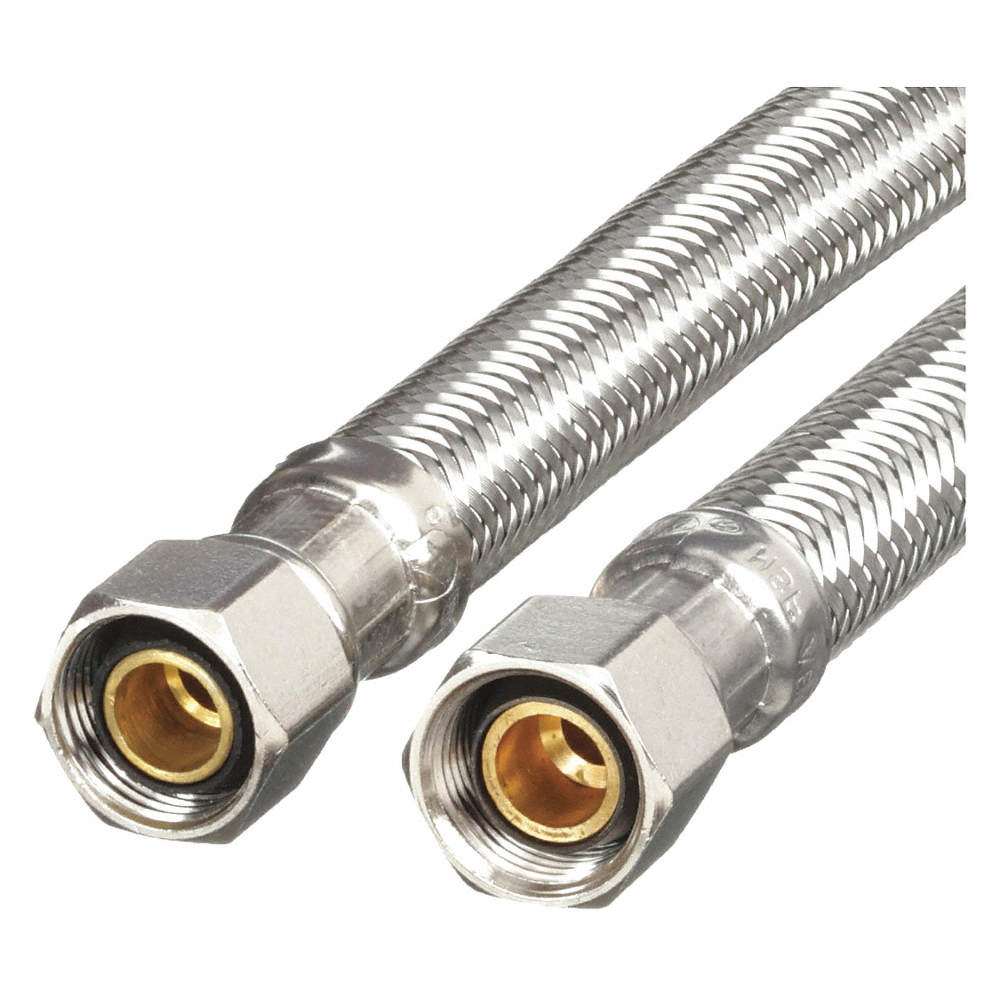
Choosing the right Metal braided hoses involves several key considerations to ensure they effectively meet the operational requirements and enhance the longevity and reliability of your system.
Here’s a simple guide to choes the appropriate Metal braided hoses:
— Steps to Choose Metal braided hoses
A. Identify Application Requirements:
- Fluid Type: Determine the type of fluid (e.g., water, oil, chemicals) the connector will be handling. This helps in selecting materials that are compatible with the fluid to prevent corrosion or degradation.
- Operating Environment: Consider the environmental conditions such as temperature, pressure, and exposure to chemicals or UV radiation.
B. Determine Pressure and Temperature Ratings:
- Pressure Rating: Ensure the connector can handle the maximum operating pressure of your system. Look for the working pressure rating provided by the manufacturer.
- Temperature Rating: Check the temperature range the connector can withstand, considering both the minimum and maximum operating temperatures of your application.
C. Choose the Appropriate Material:
- Inner Hose Material: Common materials include stainless steel (for high corrosion resistance and strength) or PTFE (for chemical resistance).
- Braiding Material: Typically made of stainless steel for durability and flexibility, but other materials may be available depending on specific requirements.
D. Consider Vibration and Movement:
- Flexibility Needs: Determine the level of flexibility required to absorb vibrations and accommodate misalignments. More flexible connectors are better suited for applications with high levels of vibration or movement.
- Vibration Absorption: Choose connectors specifically designed to reduce vibration transmission to protect both the pump and the piping system.
E. Assess Length and Size:
- Length: Select the appropriate length to ensure the connector can accommodate the expected movement and vibrations without undue stress.
- Diameter: Ensure the inner diameter of the connector matches the piping system to maintain proper flow rates and reduce pressure drop.
F. Evaluate Connection Type:
- End Fittings: Choose the correct type of end fittings (e.g., threaded, flanged, or welded) that are compatible with your pump and piping connections.
- Installation Requirements: Consider ease of installation and the ability to securely connect to the existing system.
G. Check for Compliance and Standards:
- Ensure the connectors meet relevant industry standards and certifications, such as ISO, ANSI, or ASME, which guarantee quality and performance.
H. Consult Manufacturer Specifications:
- Manufacturer Data Sheets: Review the technical specifications and recommendations provided by the manufacturer to ensure the selected connectors meet your operational requirements.
- Warranty and Support: Consider manufacturers that offer good warranties and technical support for their products.
— Practical Considerations
- Maintenance and Replacement:
- Choose connectors that are easy to inspect and replace if necessary. Regular maintenance can extend the lifespan of the connectors and the overall system.
- Compatibility with Pump Type:
- Ensure the connectors are compatible with the specific type of pump being used, considering factors like flow rate and pulsation characteristics.
— Example Selection
For a high-temperature water pumping system in an industrial setting:
- Fluid Type: Hot water.
- Pressure and Temperature Ratings: Maximum pressure of 10 bar, temperature up to 150°C.
- Material: Stainless steel inner hose with stainless steel braiding.
- Length and Size: 1 meter long with a 1-inch inner diameter.
- End Fittings: Flanged connections for secure attachment.
- Standards Compliance: Ensure compliance with relevant ISO and ANSI standards.
By following these steps and considering these factors, you can select the most suitable Metal braided hoses for your specific application, ensuring reliability, efficiency, and longevity of your fluid handling system.

